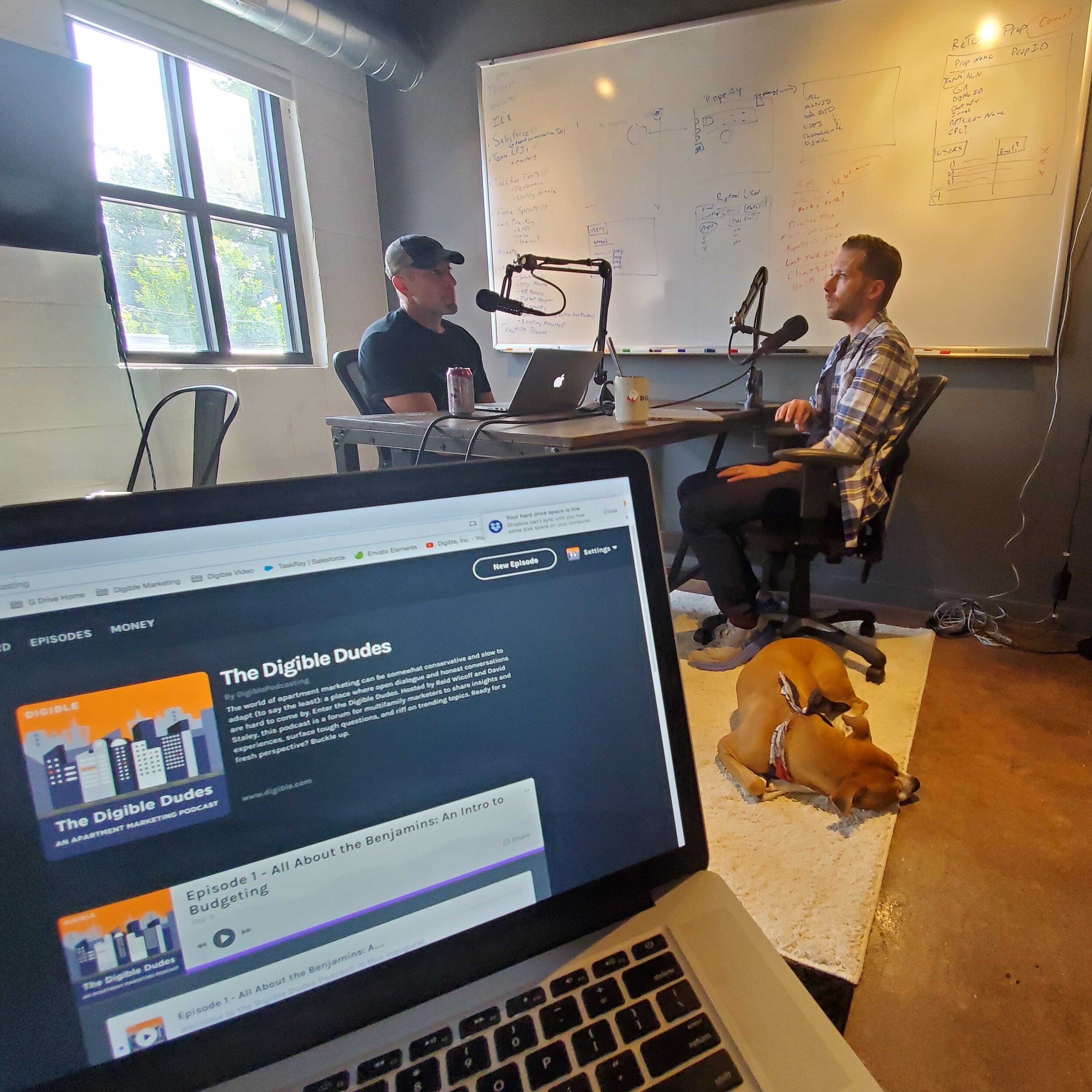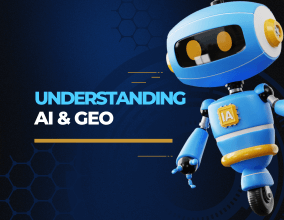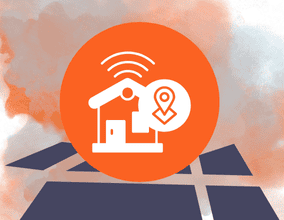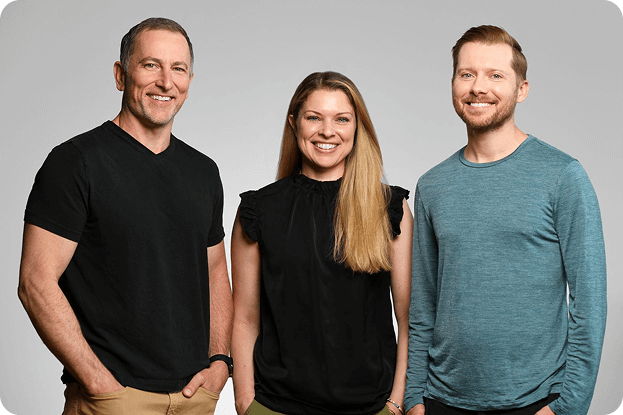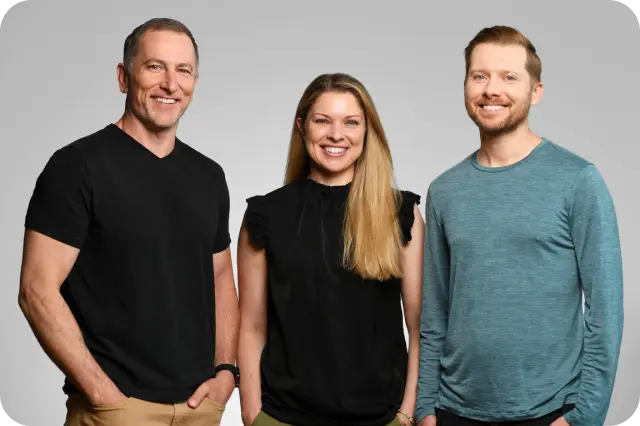Audio Transcription
David: Welcome to the Digible Dudes podcast. This is David. Today I’m here with Adam. Well, you should introduce yourself Adam. Who are you? And what do you do?
Adam: Hey, I’m Adam. I’m the digital marketing manager here at Digible and I head up our Paid Media Department.
David: Today we’re covering a Monday Metric on cost-per-click.
I kind of make fun of Adam because it seems like it’s the most boring, surface easy metric that he gets his other team members are getting more sexy metrics, but he gets this one and yet we still managed to go like three minutes long on a 10-minute episode Adam. How’d that happen?
Adam: Cost-per-click is more interesting people give it credit for David.
David: Well I’ll let the listeners to be the judge of that. But if you keep listening today, you’re going to hear a little bit about Adam’s vision, I guess about cost-per-click, how he views it, how the team views it, how it’s a good metric, but also can be a bad metric. You’ll get a little bit of a definition, some KPI benchmarks on paid search specifically and just some things to watch out for so keep listening.
So Adam, with the straw game you got the most exciting metric ever cost-per-click
Adam: My favorite.
David: So for today’s Monday metric we’re talking cost-per-click. That may seem a little junior, but CPC, or cost-per-click, simply means how much do you pay every time your ad is clicked. So quick history, I’ve known about cost-per-click or been familiar with it for probably 15 years. It’s been around for 20, but it’s something that AdWords I’d say as far as my knowledge like really popularized where it used to be very much either you just buy standard ad placement and it was just one cost or you’d be paying per impression, but Google sort of revolutionized things by going after cost-per-click. People at the time were like, well, this is sweet because now I can just pay if someone clicks on my ads that must be super relevant. Great. I can pay 10 cents or whatever it was at the time because there wasn’t a lot of competition. You know fast forward 20 years, 15 years later is cost-per-click still important? If so, why how do you think about it?
Adam: Yes, I do think cost-per-click is definitely still important and it’s just another piece of data we have. It’s not the end-all be-all metric, but it’s still a very relevant metric when you look at maybe explaining performances increase or decrease or looking at Market competition, cost-per-click is a great metric to also use that for benchmarking and maybe determine if this market is more competitive or if these keyword groups are more competitive.
That’s a great benchmark for that and then to see is this increased cost-per-click for this subset of keywords still worth the ROI of going after or is there something we can do to tweak on our end to drive down that cost-per-click and make it fit within our ROI goals?
David: Right and I would say in my experience you don’t want to only optimize for cost-per-click at first. You can sort of run into that issue where it’s like, oh, I’m gonna, on paid search for example, I can get branded clicks for 10 cents, right or whatever it is 15 cents, but you can get long tail keywords for a dollar fifty. Why would I ever pay a dollar fifty?
So I’ll let you answer that.
Adam: One hundred percent cost-per-click is I’ll say the front end metric to what the ultimate goal metric is which is cost-per I’ll say cost-per-acquisition or cost-per-conversion. So, obviously the higher your cost-per-click if you’re working within a let’s say a constrained budget, the higher your cost-per-click, the less clicks you’re going to get. Therefore the less conversions you’re going to get and the higher your cost-per-conversion is going to be. So you still want to keep that low, but you want to ultimately optimized towards this cost-per-conversion metric and front end of that is like I said cost-per-click. So I’ll say going back to long tail keywords and maybe just brand keywords long tailed keywords are actually going to end up being, I’ll say cheaper than a lot of shorter, broader keywords, simply because the longer the tail of the keyword is the more specific it is you can think the less people are going to be in that cost-per-click acquisition, or not acquisition, but that cost-per-click auction. So therefore it’s going to have a lower price. If I search for let’s say I have an apartment building called Adam’s Apartments and if I just bid on my brand name, which is Adam. I’m going to get thousands and thousands of searches, hundreds of clicks from people just typing in Adams, you know, Adam’s Apple, you know. And all these other crazy, crazy other who knows what they’re searching for, Adam’s Pizzeria, Adams Garage and Auto Body. None of which are looking for apartments, but my ads going to keep showing up because I’m just bidding on Adam, but therefore if I type in if I have a keyword for “Adams luxury apartments” or “two bedroom apartments in Denver for rent Adams Apartments”, the more specific I get and the longer tail those keywords get, the fewer people are going to be searching for that. And therefore the fewer people in the auction, the less there is to drive up that price, and lower your cost per click is ultimately going to be.
David: Right and then again to be clear it’s not always that a lower cost-per-click will equal a lower cost-per-conversion because you could get a lot of junk traffic –
Adam: Completely.
David: – for a penny but it doesn’t mean you’re going to convert.
Adam: Quality is always going to be number one when you look at traffic and it’s not necessarily, I think one of the bigger pitfalls of cost-per-click and the metric that there’s sunsetting in Google, which is average position, is that the the higher you are, position one or the higher your cost-per-click, the better traffic is going to be. In theory that’s essentially how it should work. But you can also, let’s say, using the Adam’s apartments or let’s say whatever apartment complex. Let’s use John’s apartments and I’m just bidding on the term John, well Papa John’s, who has a huge budget and they’re driving cost-per-click way up, so now my cost-per-click is $10.50 for some crappy quality traffic. So what we want to do on that is make sure you only pay when people click on your ads at the very beginning. But what we want to do is, one: make sure keywords are relevant. So instead of Adam, bid on Adam’s Apartments, instead of John bid on John’s Apartments, put in negative keywords like Papa John’s or Adam’s apple or Adams Auto Body, but then also use ad copy to, you can really control more cost-per-click in ad copy than I think a lot of people realize and control your quality of traffic just right off the gate before you’re even charged.
By just really using effective ad copy that one: obviously focuses on your unique selling points, but two: is transparent and provides as much pre-qualifying, let’s say consumer data or not consumer data, but product information, as possible such as pricing in the headline. What’s the price of this product, is it expensive? Is it in my price range? Is it not? That’s something I can know right away before I even click on an ad, before advertisers are even charged and other things such as in the apartment marketing world, you know, no pets allowed, whatever else that might be, school districts, anything like that that can let people know if they’re interested or not interested right away before they even have to click on it. So you can do it you can extrapolate this out to as far as you want to. Putting amenities in there with like, if I’m searching for luxury apartments in Denver with a pool. I can see this place has a pool. That’s one of my pre-qualifiers. Perfect. Or I can see this place doesn’t have a pool, but it’s got a fitness center. Maybe that’s kind of what I’m looking for, but not quite so I might not click on it. Maybe I’ll come back to it later.
David: Right.
Adam: There’s a lot of things you can do to, I’ll say control that quality just right off the gate.
David: Right if it says “Roach Motel $2,000” maybe I’ll avoid clicking on that for this time because I’m not into roaches very much. So real quick. You were basically just got like four minutes left here, but you were obviously talking a lot about search but cost-per-click is a metric that sort of spans every platform. People think about it with Social, geofencing, display, does it hold as much weight in those platforms? And then we’re going to quickly get to some KPI’s.
Adam: For sure.
I think it holds weight in every platform. Essentially, to me cost-per- anything holds weight in any platform because you’re paying dollars for something. So you want to make sure you’re keeping an eye on cost-per-click, cost-per-acquisition whatever it may be. I think when you look at cost-per-conversion or acquisition, lead, whatever it may be you just have to adjust those KPI’s the further up the funnel you get. Maybe for some display prospecting it’s not a phone call or form fill. Maybe it’s just time on site or how many page views they visited. Something that’s more higher up the funnel in terms of driving awareness, driving product education as opposed to that lower funnel in search where you do want them to actually fill out a lead form, or make a purchase on your website.
David: Cool. And then, so you may see, for example cost-per-click on social will often be lower than cost-per-click on search. Again that doesn’t mean you should just now move all of your dollars to social because you’ll see your overall conversions decline.
Adam: Absolutely. You’ll probably see, if you look at I’ll say bottom line conversions, which are those on website purchases, lead-gen form fills on your website, phone calls. That cost will probably be much higher the cost-per-conversion or cost-per-acquisition, cost-per-lead will probably much higher on paid social but you’ll have a lower cost-per-click simply because it’s one of those platforms like display like a lot of others that are just high up in the platform and aren’t meant to necessarily drive people to convert. It’s fantastic if they do, but it’s meant to educate them about your product and make sure that when they are in the market for your product or they are researching products in your vertical that they’re aware of yours. And what is it what it is
David: Right. I see an ad on Facebook, I’m in the grocery store line. I’m just bored and it says Lazy River Pool Denver. I’m like sweet. I’m going to click on that. I own a home. I’m not looking for a lazy river, but hey, I’m interested to know what apartment that is. So my click is very cheap, but it doesn’t mean I’m going to convert.
Adam: Absolutely.
David: So as quick KPI’s and I know I’m going to put you on the spot here, but for search let’s think about cost-per-click on search.
Just give me some just standard stuff, what you see is like what kind of normal range and when do you become alarmed on either side of it?
Adam: For sure. I think normal ranges when you look at cost-per-click, you have to separate brand versus non-brand, your brand cost per click should be below a dollar, really it should be much lower than a dollar, but it will depend on what your brand name is and what type of brand terms you’re bidding on. In the past I worked at a company called Raise, so you can imagine there’s a million different searches for people searching for “Raise”, like “how do I get a raise”, “raise the roof”, and so on and so forth, so our cost per click might be higher until we can nail down some of those negative keywords, maybe put on some longer keywords or longer tailed keywords for our brand. And then non-brand, when you really want to be alarmed is when you see large jumps in fluctuations. We’ve seen ranges, I’ll say industry average across the entire US, we like to use a benchmark of $2.50. But we’ve seen it as low as $1.20. We’ve seen it as high as $7.50. For some markets, to be on the absolute position one on Google it’s a $30 cost-per-click. So we’ve seen it everywhere. You just want to make sure your cost-per-click is in range where you’re still able to get a cost-per-acquisition or a cost-per-lead that’s within your ROI goals. Obviously if your cost per lead goal is $20 you don’t want to be having your keyword bids set at $30 per click. Otherwise, you’re just always going to be chasing the rabbit. But when you look at alarming stuff, it is those fluctuations where what happened all of a sudden I made it go from 2.50 to 5.50.
There’s a lot of things that go into it. There’s increased competition. Maybe let’s say an ILS or something decided to really push hard in that market. There’s obviously market size, seasonality. It could be, we’re seeing a lot of it in I’ll say a Nashville suburb right now where there’s just not a lot of search demand, there’s not a lot of renter’s out there actively looking for apartments, but there is a lot of apartments looking for renters, which is really driving up costs-per-click very high in that submarket. It’s almost like a reverse supply-demand like the printers are the supply there’s not a lot.
There’s a lot of demand for renters, which is driving up the cost-per-click for all of those searches. So there’s just a lot of things to look at and some of them might be. Industry competition, seasonality, all that stuff.
There’s some other stuff you can look at if you’ve made changes on your website. A lot of things go into it, your Google quality score, which is one of the factors of your cost-per-click you might have to pay, which is like ad relevance, expected click-through rate landing page experience. So all those things are things you can definitely look at.
David: Right. Yeah, so cost-per-click, there’s a lot of things that go into it. It’s not just the competition. You can do some things on your side besides targeting and keywords to improve that, but that’s something we can get into in another episode. Overall, sounds like what I’m hearing is cost-per-click’s been around it’s not going anywhere anytime soon.
It’s something you would consider on every platform, but it wouldn’t be your number one sort of barometer to say that this campaign is performing or not.
Adam: Absolutely. I think it’s just part of a it’s another page in a story. So it’s definitely something you look at when you’re looking at the whole picture and you won’t even get into the holistic marketing and all these other buzzwords.
It’s definitely something you want to take a look at when you’re looking at everything but like I said earlier, it’s not the end-all be-all metric. I’ll make a terrible analogy. But for me, it’s just another piece of data and when it comes to paid marketing, especially I tell people data is like pizza, there’s no such thing as bad pizza unless you don’t use it. It’s the same with data. There’s no such thing as bad data except for data you’re not looking at, so that’s my whole theory on data.
David: Works for me. Cool. Thanks, Adam.
Adam: Cool.



